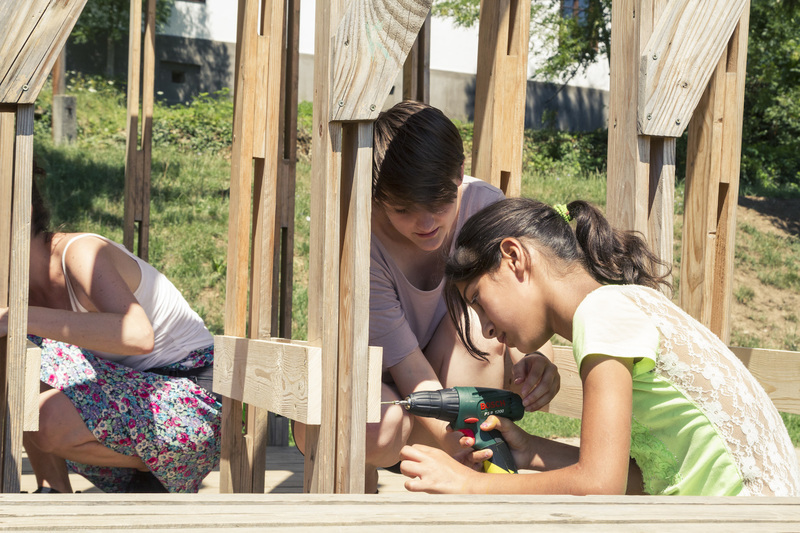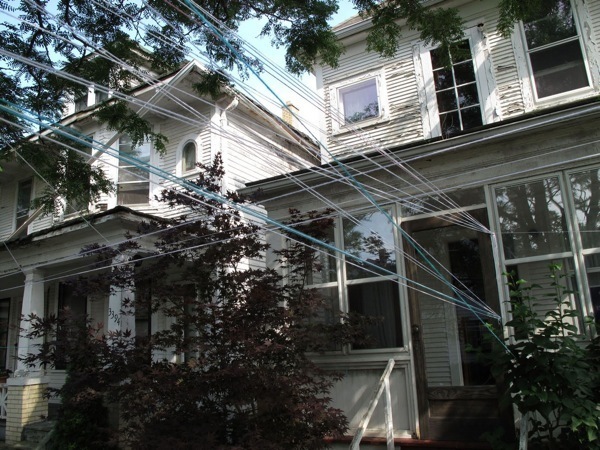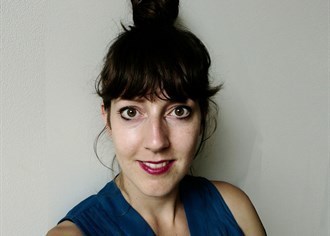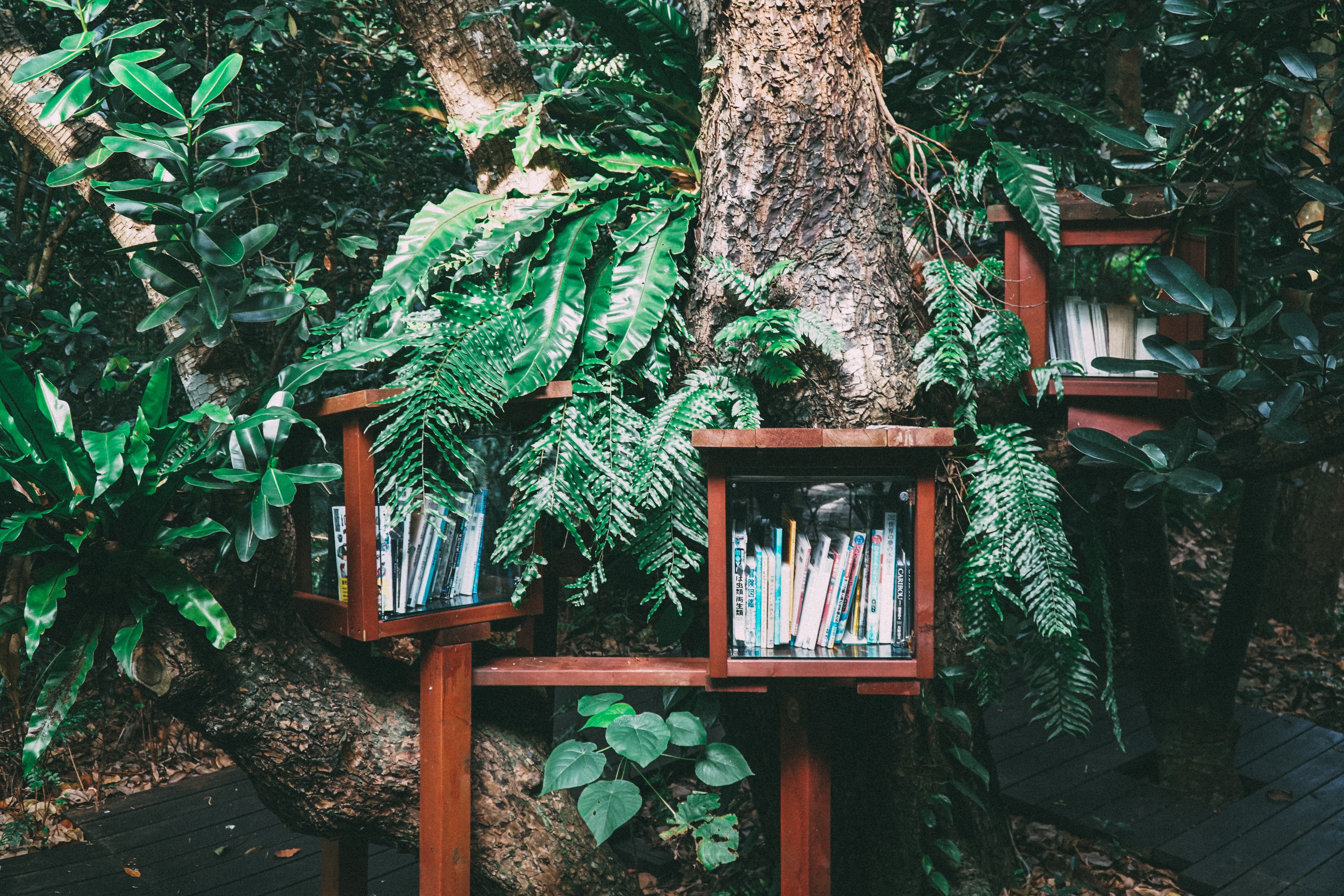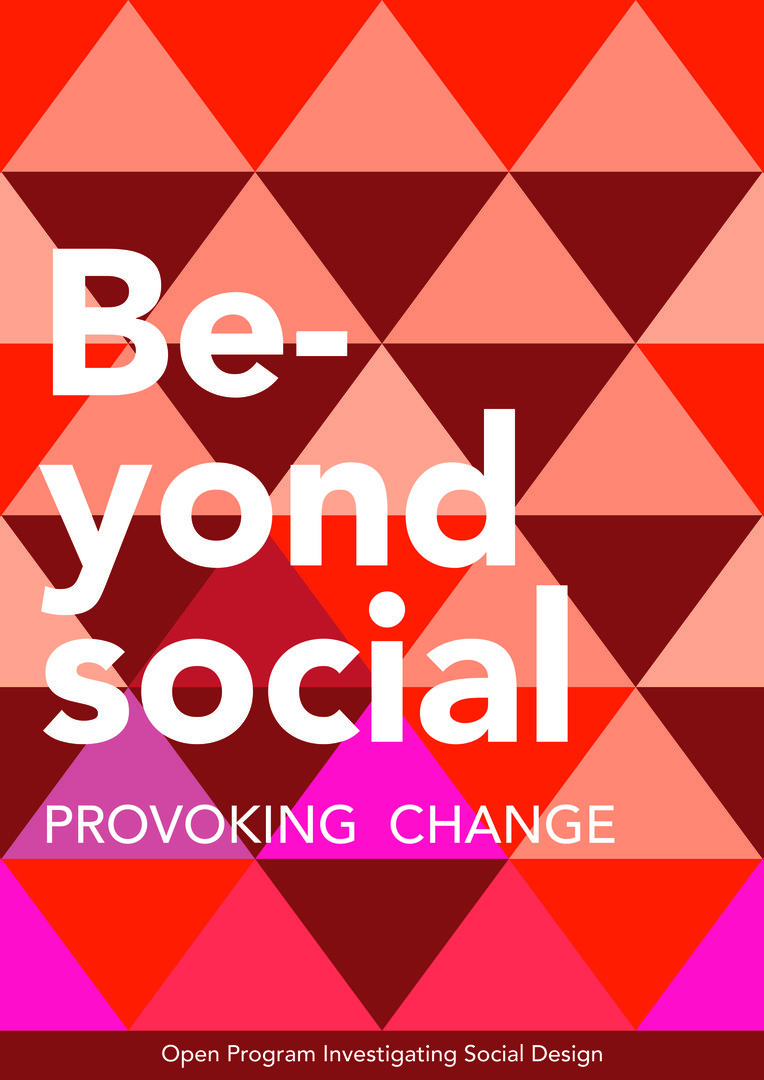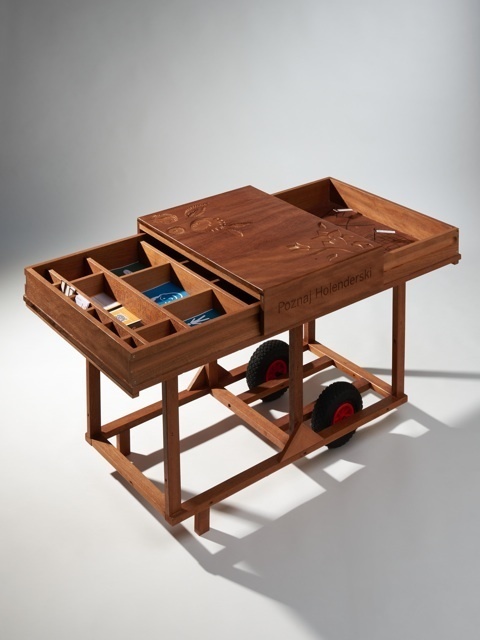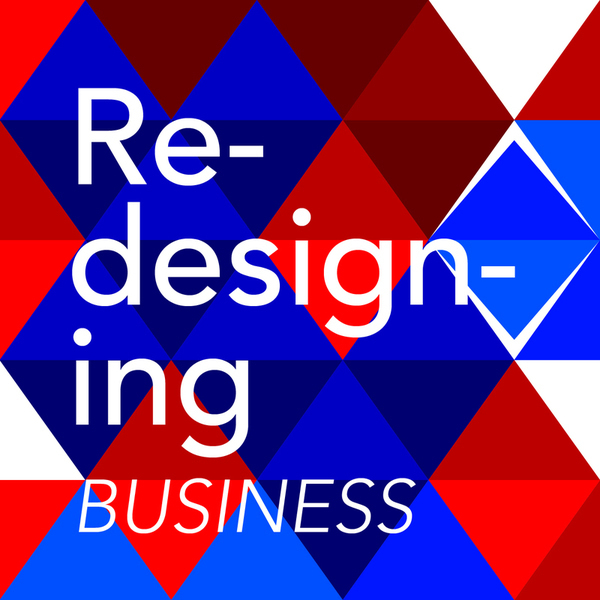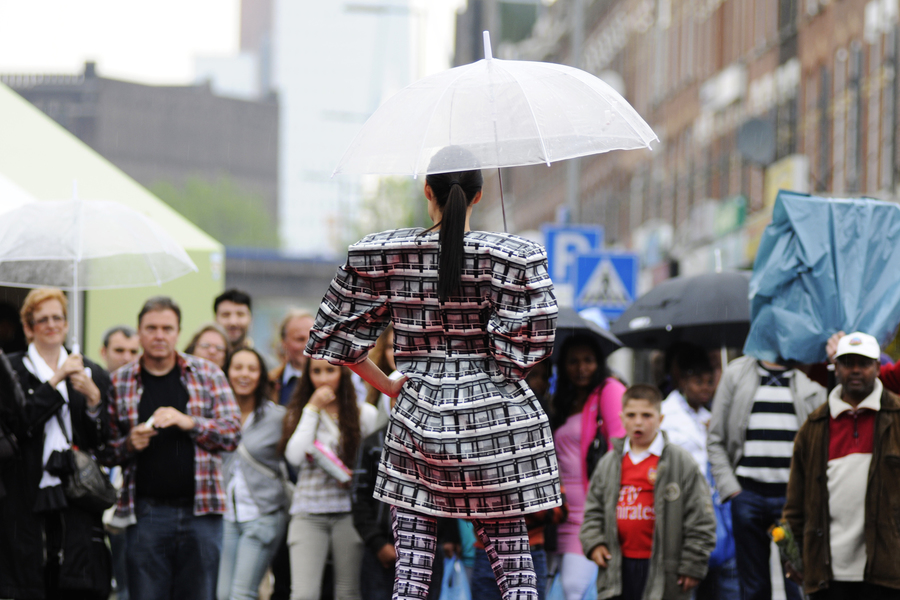|
|
| (12 intermediate revisions by 2 users not shown) |
| Line 1: |
Line 1: |
| | {{Editor selection | | {{Editor selection |
| | |Editor=Iris Schutten | | |Editor=Iris Schutten |
| − | }}
| |
| − | {{Editor selection
| |
| − | |Editor=Sikko
| |
| | }} | | }} |
| | {{Editorial | | {{Editorial |
| | |Image=CF_SU_2015_bodvasz_ReniPetra_Nikolett Kustos.jpg | | |Image=CF_SU_2015_bodvasz_ReniPetra_Nikolett Kustos.jpg |
| | |Caption=The Cloudfactory, Photo by Nikolett Kustos | | |Caption=The Cloudfactory, Photo by Nikolett Kustos |
| − | |Intro=Author: Sikko Cleveringa | + | |Intro=This editorial of Beyond Social focuses on educating artists and designers in the field of social design. What does good social design education look like? And how to further improve and intensify the connection between educational activities and contemporary (alternative) cultural, social and economic developments? We invite you to join in this inquiry by uploading your contribution! |
| − | | |
| − | Empowering tomorrow's gamechangers
| |
| − | | |
| − | '''Dear reader,'''
| |
| − | '''Beyond Social is an international and collaborative research and publishing platform on social art and design. It connects professionals and students from different fields of expertise. It is a platform for sharing knowledge, projects, visions, opinions, experiments and insights. The platform is powered by WdKA lecturers, students, alumni and partners in society. We invite you to join us. Together we can further develop our art and design education, our understanding of socially relevant themes and practices, and the connection between these two fields. The second edition of Beyond Social focuses on educating artists and designers in social practices. Why 'game changers'? Which game and what outcomes are we aiming for? Who should be engaged in this game? How can we further improve and intensify the connection between our educational activities and contemporary (alternative) cultural, social and economic developments? We invite you to join in this inquiry.'''
| |
| − | | |
| − | == Guest editor and curator ==
| |
| − | I welcome you here as the guest editor and curator of the July 2016 edition of the Beyond Social magazine and event, and also as the interim coordinator of the Social Practices department of the Willem de Kooning Academy for Fine Arts and Design in Rotterdam (WdKA).
| |
| − | I have been asked to coordinate and optimise the curriculum of the Social Practices profile at the WdKA, as well as the related Beyond Social magazine and event, for a period of 3 to 6 months. In this context I am also looking ahead to the possible approval by Erasmus+ of the 'YesDesign' project for the period 2016-2018. The objectives of this international community of practice are quite similar to my current assignment. Partners in this project are: VIA Design of the University College of Aarhus (VIA, Denmark), Moholy-Nagy University of Art and Design in Budapest (MOME, Hungary) and the Centre for Social Design of the Maryland Institute College of the Arts in Baltimore (MICA, USA), as well as a number of independent expert organisations including my own company CAL-XL Advies.
| |
| − | The WdKA is considered, in the Netherlands as well as on the international level, as a pioneer in the field of social art and design at the intersection of education and professional practices. Director Jeroen Chabot, course director Roger Teeuwen, Social Practices coordinator Iris Schutten and their teams of lecturers and supporting staff, all deserve credit for this. The motto 'creating pioneers' suits them well.
| |
| − | | |
| − | == How to optimise and intensify joint learning ==
| |
| − | It is for me a pleasure and a honour to have been invited to join in this effort and to contribute to its further development. I feel that the WdKA is really on the right track, and that my role as a relative outsider is primarily in helping to optimise and intensify the joint learning process, particularly regarding the optimal connection between the educational programme and the professional practice. I am becoming increasingly aware of how the Beyond Social magazine and event could provide an excellent platform for this development. The current edition can be understood as a first outline of why and how this could work. I will begin my outline with a short reflection on education in the field of art and design in social practices, before explaining how I propose to explore this educational practice in the context of the Beyond Social magazine and event.
| |
| − | | |
| − | == Education of art and design in social practices ==
| |
| − | | |
| − | === Why art and design in social practices? – Themes ===
| |
| − | Social art and design is about transitions in society, moral leadership, and (proposing) how to change the rules of the game. The motto 'empowering tomorrow's game changers' has a double meaning: the ultimate game changers, our heroes, are the stakeholders in society with whom we work – such as, in the case of the YesDesign project, youth in underprivileged communities in Bospolder-Tussendijken, and the local social partners with whom they can make a difference. Our primary game changers, however, are our own students and alumni; we see it as our mission to prepare them for a role in which they can help these pioneers in society position themselves. After all, diversity, sustainability, empowerment and democratisation are all important themes in Rotterdam as well as other European cities.
| |
| − | | |
| − | === How does it work? – Methods ===
| |
| − | | |
| − | Our society is changing rapidly; it's not enough to simply use and reproduce the culture of yesterday. Art can be understood as a laboratory for the production of culture which fits the society of today and tomorrow. The specific quality of the artist in this process is rooted in strongly developed right-brain qualities (dealing with intuition, imagination, uncertainty, etc.) and the ability to visualise (not-yet-existent) objects, data, meanings and ideas (Sullivan). Important methodological steps in this process of artistic research are to explore, to analyse, to reframe, to create and to sell/share.
| |
| − | | |
| − | === Who do we need? – Community of practice ===
| |
| − | | |
| − | A successful synergy between education and practice requires the following: on one hand we need students, alumni and artist educators with a sense of social engagement and with the (potential) artistic research competences of a game changer. On the other had we need social partners and clients who also wish to make a difference in relation to these themes, and who are ready to accept that any substantial change in society will have to start within their own organisation (and not only within their client groups). Most importantly however, we need a mixed community of practice of artists, designers, citizens and other stakeholders in society who are willing and able to engage in a long-term learning process of how to best optimise the curriculum as well as practices in society.
| |
| − | | |
| − | === What is the output and impact we expect? – Quality management ===
| |
| − | A successful social art and design intervention allows for the creation of new images or narratives; new connections between people, organisations or things; and new competences, on the level of individuals as well as institutions. (In Dutch: verbeelding, verbinding, vermogens.) The expected outcome/impact is that participants will be able to increase their influence on their personal development, on their social and physical environment, and on the public domain. This will turn have an impact on (alternative) cultural, social and economic developments within society. In order to be able to discuss and learn about these mechanisms, outcomes and impacts (and to 'sell' and share them) we need to be able to measure and document what we are doing; thus some kind of quality management system is required.
| |
| − | | |
| − | == Framework for curriculum development ==
| |
| − | | |
| − | Curriculum development should thus focus on relevant themes, methods, communities of practice and quality management for game changers. For this purpose I have developed an experimental framework, structured as a matrix of four themes and five sets of methods. This framework is presented below. The framework was inspired by the current themes and methods of the WdKA's four specialisations in the curriculum of Social Practices: Cultural Diversity, Sustainability, Gamification and Open Design. These specialisations in fact also feature – consciously or coincidentally – these same combinations of themes and methods. The grey boxes indicate approximately where these specialisations could be positioned within this framework (the fifth grey box, 'Sell Empowerment', will be addressed later in this text).
| |
| − | | |
| − | [[File:Framework.jpg|600px]]
| |
| − | | |
| − | (*)The specialisation Cultural Diversity is related to embedded research and other exploratory methods. It is, and can be, about all kinds of diversity (not only cultural but also social and economic);
| |
| − | | |
| − | (*)The specialisation Sustainability is related to system analysis and other analytical methods. In fact it is predominantly about material flows ('blue economy'), but social and cultural systems can be mapped as well ('sustainism');
| |
| − | | |
| − | (*)The specialisation Gamification is related to game-changing methods and the reframing of 'wicked problems'. In fact it is predominantly about behavioural change of specific target groups. Potentially it is also about a renegotiation of power between citizens and institutions, by challenging the current rules of the game and playfully proposing and testing new ones;
| |
| − | | |
| − | (*)The specialisation Open Design is approximately related to democratisation and product design. Potentially this part of the matrix is also about what design can achieve in light of the current (possibly failing) decentralisation and democratisation in our disoriented nation states.
| |
| − | | |
| − | (*)The set of methods related to selling and/or sharing is currently not organised as a distinct specialisation within the curriculum, nor is it connected to a specific theme in society. However, it obviously deserves attention in all specialisations. In fact the WdKA's Hybrid Publishing Practice, as well as the Social Practices department's Beyond Social magazine and events, are potentially important platforms for 'selling' and sharing our art and design methods, products and impact. In this framework I consider this selling and sharing as a form of internal and external positioning and thus empowerment of both our students and our partners in society.
| |
| − | | |
| − | Please consider this framework as a first attempt by an outsider to achieve a clearer understanding of a sophisticated programme with many contributors and a rich legacy. As such, it is absolutely open for discussion and improvements. A first check however with lecturers and students has given me the impression that my observations and proposition are not totally nuts. The model may even be less random than it seems. Our keynote speaker at the July 8 event, Dr Marina Meeuwisse, will present a theoretical model for Art, Design and Social Change, inspired by Graeme Sullivan's 'Art Practice as Research' (2005), which bears a striking resemblance to my own experimental framework (we will publish more on this subject at a later date). This gave me the courage to share my experimental framework with you, the reader, and to use it as a guideline in editing the Beyond Social magazine and curating the July 8, 2016 edition of the Beyond Social event.
| |
| − | | |
| − | === Beyond Social magazine and event ===
| |
| − | In editing the magazine and curating the event of July 2016, we used – on an experimental basis – the above framework as the guiding principle for positioning content.
| |
| − | | |
| − | In the magazine, you can select the themes and methods of the matrix as topics at the top of the page, and then go on to find the relevant selection. Currently, not all combinations result in a sufficient number of hits, however we hope this will encourage users and readers to add their own contributions. We have also formulated follow-up questions at the end of each article, with the goal of stimulating further interaction. I consider the content of the July edition as a starting point, and I intend to actively motivate lecturers, students and external partners to 'complete the picture' and/or to challenge it during the upcoming six months. By late 2016 we should be able to evaluate the results of this exercise in terms of learning as well as internal and external positioning.
| |
| − | | |
| − | During the final examination event 'WdKA Finals 2016', we will be experimenting with a classification of the examination work of all students in the graduation exhibition. At the Beyond Social event, we will present the framework and invite the audience to experiment with it by walking thematic and methodological routes through the exhibition. Each route will consist of 3 to 4 works. We also ask the audience to give feedback at the end of the route. The routes should also be available as an application on mobile phones, allowing interested visitors to explore various routes, also during the weekend at the graduation exhibition after the event.
| |
| − | In the autumn of 2016 we will evaluate this experiment and decide whether and how this framework – or an adapted version of it – could also be of use for curriculum development.
| |
| − | | |
| − | === The next steps ===
| |
| − | Possible next steps for making Beyond Social an inspirational platform for the internal and external positioning of social art and design include:
| |
| − | | |
| − | (*)Install and facilitate an editorial board of students, lecturers and external partners, and give them co-ownership of this platform and this learning function;
| |
| − | | |
| − | (*)Improve the platform function, making it more personal and interactive, and encouraging more peer reviews and joint research and development;
| |
| − | | |
| − | (*)Position Beyond Design as an important learning platform for communities of practice related to long-term partnerships on the WdKA's agenda (including YesDesign if it receives funding);
| |
| − | | |
| − | (*)Integrate Beyond Social in the curriculum – give students as part of their study the assignment to publish about their projects and/or to react on contributions of others and on questions of the editorial board;
| |
| − | | |
| − | (*)Invite partner institutions such as MOME to do the same;
| |
| − | | |
| − | (*)Include a category 'methods' in the wiki system, and invite internal and external experts to write and co-write practical guidelines for appropriate methodologies in the context of the framework (5 sets of methodologies, possibly also to be redefined);
| |
| − | | |
| − | (*)Further develop the Hybrid Publishing function, for example to facilitate co-creation in the further development, publication and dissemination of inspiring contributions;
| |
| − | | |
| − | (*)Welcome other relevant suggestions and initiatives. You are invited to join us!
| |
| − | | |
| − | [[Categorie:Introduction]]
| |
| | |Editor 1=Sikko | | |Editor 1=Sikko |
| | |Editor 2=Iris Schutten | | |Editor 2=Iris Schutten |
| | }} | | }} |
| | {{Article Selection | | {{Article Selection |
| − | |Article=Communication, Commitment and Community in Social Design. | + | |Article=Social Design as a Political Act |
| − | |Notes=How should, according to Yoád David Luxembourg, communication, commitment and community play a key role in the Willem de Kooning Academy's Social Practices specialisations of Cultural Diversity, Sustainability, Gamification, and Open Design? | + | |Notes=There are many different ideas about what social design is or should be. At Willem de Kooning Academy we do not prescribe one over another, we led our students discover and define their own position in relation to this field. Nevertheless, we've designed our education from a specific perspective. Living is a world that faces huge societal issues we approach Social Design as a political act, aiming to stir up the status quo and striving for positive change. |
| | + | }} |
| | + | {{Article Selection |
| | + | |Article=Long-Term Engagement: The Cloudfactory |
| | + | |Notes=Social Design Education in Hungary: MOME recognised that to build a university for the 21st century means breaking down the walls of the elitist ivory tower and reaching out towards real problems and communities. Based on the experiences of Cloudfactory project, a continuous physical presence in the center of social challenges is essential in social design education. Cloudfactory Field Lab, a research center in remote Bodvaszilas that MOME plans to build in the next years, might be a much smaller scale development than the one in the Budapest campus. However in terms of impact on social design education in Hungary, it will be equal or perhaps even bigger. |
| | }} | | }} |
| | {{Article Selection | | {{Article Selection |
| | |Article=Designmatters: LEAP Dialogues | | |Article=Designmatters: LEAP Dialogues |
| | |Notes=Social Design Education in Pasadena: The Designmatters department of the ArtCenter College of Design in Pasadena has the same ambition as the WdKA: to foster a strong connection between education and practice. We are at the helm of a diverse set of educational initiatives, special projects and publications that demonstrate the power of design for social innovation: an emergent field of design inquiry and practice that is oriented toward new possibilities for action and human progress. I will briefly explain here how we connect to practices in the field and how we perceive the future role of designers in society. | | |Notes=Social Design Education in Pasadena: The Designmatters department of the ArtCenter College of Design in Pasadena has the same ambition as the WdKA: to foster a strong connection between education and practice. We are at the helm of a diverse set of educational initiatives, special projects and publications that demonstrate the power of design for social innovation: an emergent field of design inquiry and practice that is oriented toward new possibilities for action and human progress. I will briefly explain here how we connect to practices in the field and how we perceive the future role of designers in society. |
| − | }}
| |
| − | {{Article Selection
| |
| − | |Article=Impact-Consciousness
| |
| − | |Notes=The public event Beyond Social Night 'Redesigning the Process' was held on February 4, 2016, showcasing best practices of recent interdisciplinary WdKA student projects on the topics of fast fashion, healthcare, refugees and wheelchair users. The underlying goal of the event was to investigate the processes behind these social art and design projects. What is the intention of this generation of designers? What are they aiming for? Is their methodology in line with their goals? And is the educational system consistent with their needs?
| |
| − | }}
| |
| − | {{Article Selection
| |
| − | |Article=Long-Term Engagement: The Cloudfactory
| |
| − | |Notes=Social Design Education in Hungary: MOME recognised that to build a university for the 21st century means breaking down the walls of the elitist ivory tower and reaching out towards real problems and communities. Based on the experiences of Cloudfactory project, a continuous physical presence in the center of social challenges is essential in social design education. Cloudfactory Field Lab, a research center in remote Bodvaszilas that MOME plans to build in the next years, might be a much smaller scale development than the one in the Budapest campus. However in terms of impact on social design education in Hungary, it will be equal or perhaps even bigger.
| |
| | }} | | }} |
| | {{Article Selection | | {{Article Selection |
| Line 111: |
Line 28: |
| | |Article=The Future of Design | | |Article=The Future of Design |
| | |Notes=Educating students for the future of design is quite a challenge. A school of art and design has the task of preparing students for their professional future, while working with the teacher-designers of the present. The word 'future' refers to something that is not yet present and thus cannot be known. Preparing design students for their future is done by extrapolating current design developments. If the word 'future' is used in the context of design, then the current notion of design is seen as being in a state of change. The question is whether a school of art and design can think in a non-linear fashion to an extent that will prepare its current students for the future of design. | | |Notes=Educating students for the future of design is quite a challenge. A school of art and design has the task of preparing students for their professional future, while working with the teacher-designers of the present. The word 'future' refers to something that is not yet present and thus cannot be known. Preparing design students for their future is done by extrapolating current design developments. If the word 'future' is used in the context of design, then the current notion of design is seen as being in a state of change. The question is whether a school of art and design can think in a non-linear fashion to an extent that will prepare its current students for the future of design. |
| − | }}
| |
| − | {{Article Selection
| |
| − | |Article=Couscous a la Joke
| |
| − | |Notes=Student project: When it comes to cultural diversity in Rotterdam, the neighbourhood called 'Oude Noorden' (Old North) seems the place to be. Migration, integration and multiculturalism come together in this vibrant part of the city, sometimes causing friction but also leading to wonderful collaborations and events. An example is the local community centre 'De Mozaïek'. Twice a week, in Resto VanHarte, people can enjoy a meal that is just as diverse as the neighbourhood's population. However, we found it striking that the majority of visitors is typically Dutch, quite in contrast with the kitchen team that seems to represent integration. We were wondering how a meal prepared by such a multicultural team could be consumed by what appeared to us to be a very non-multicultural (and possibly even anti-multicultural) group?
| |
| − | }}
| |
| − | {{Article Selection
| |
| − | |Article=De Ceuvel
| |
| − | |Notes=Near the Van Hasselt canal and the IJ in Amsterdam-Noord, a former ship wharf now hosts a very special association of creative and social entrepreneurs called De Ceuvel. De Ceuvel is run by a group of architects, landscape architects, artists, photographers, designers, etc. who have an amazing approach that combines sustainability and social motives, stimulates the local economy (keeping transportation costs low) and proves to be a laboratory for (alternative) cultural, social and economic development in an autarkic and 'Do-It-Yourself' manner.
| |
| − | }}
| |
| − | {{Article Selection
| |
| − | |Article=De StickerStemWijzer
| |
| − | |Notes=Six years ago Renate Boere worried about the populist style of communication of certain politicians. By making clever use of the 'voice of the people' these political leaders were able to gain a great deal of support in a short period of time. Renate Boere asked herself, 'can I, as a designer, do something about this?'
| |
| − | }}
| |
| − | {{Article Selection
| |
| − | |Article=Design for Child Oncology
| |
| − | |Notes=Research project: Cancer is the main cause of child mortality in the Netherlands. Though adequate exercise and a varied diet increases chances of survival, for many seriously ill children this is difficult to achieve since they are too exhausted. Most existing research in oncology focuses on methods of treatment such as chemotherapy and radiotherapy. Few research projects so far have concentrated on supportive cancer care for children. This is why we have conducted a 'research through design' project to design, implement and evaluate interventions that stimulate adequate eating and exercising behaviour among children with cancer and their families.
| |
| − | }}
| |
| − | {{Article Selection
| |
| − | |Article=Exchange Knitting
| |
| − | |Notes=Studentproject: Yvonne Swiers is a fashion designer (WdKA, minor Open Design) and interested in sharing knowledge about knitwear. Therefore she initiated a project focusing on sharing knitting knowledge. This led to the following question: Which ways of sharing are possible using various knitting techniques, and how do these ways of sharing make it possible for other people to participate?
| |
| − | }}
| |
| − | {{Article Selection
| |
| − | |Article=Gewichtige Gedachten
| |
| − | |Notes=Studentproject: Many women are dissatisfied with their weight and focus their attention on the aspects of their body they are unhappy with. Sophie Bragt decided developped a positive book for women; a book in which words such as 'lose weight', 'calories' and 'scale' are not used, but which focuses instead on what is necessary to make yourself feel healthy, fit and confident.
| |
| − | }}
| |
| − | {{Article Selection
| |
| − | |Article=Hi Honey
| |
| − | |Notes=Studentproject: Hi honey is a revolutionary next step in beekeeping. The way we consume honey is completely unsustainable. With Hi Honey we can change the system.
| |
| − | }}
| |
| − | {{Article Selection
| |
| − | |Article=Microbial Energy
| |
| − | |Notes=Studentproject: Why should we still use polluting energy sources, if there is a renewable source that also cleans up pollution?
| |
| − | }}
| |
| − | {{Article Selection
| |
| − | |Article=Noorderboulevard
| |
| − | |Notes=Studentproject: 'De Noorderboulevard' is a visual research of a culturally diverse street. When looking at a typical urban shopping street, often located in middle-to-lower income areas, one finds many shops representing a completely different aspect of graphic design.
| |
| − | }}
| |
| − | {{Article Selection
| |
| − | |Article=Pooling people
| |
| − | |Notes=Studentproject: How can open design play a role in enhancing social contact?
| |
| − | }}
| |
| − | {{Article Selection
| |
| − | |Article=Retour Afzender
| |
| − | |Notes=Studentproject: We all know there are asylum seekers living in our country. But where exactly do they live?
| |
| − | }}
| |
| − | {{Article Selection
| |
| − | |Article=Samenspel
| |
| − | |Notes=Studentproject: The RDM (Rotterdamsche Droogdok Maatschappij) is a former shipbuilding wharf located in a remote area in the harbour of Rotterdam. Due to the isolated location, the company built the village of Heijplaat in 1914 to provide housing for its employees. Since the 1990s however the area has undergone a series of important transformations, many of which have had a negative impact on the local population. My project 'Samenspel' focused on this specific location, and also on the question: how to reshape the connection between the RDM wharf and the village? Can I design (the implementation of) a new function for the RDM that attracts the local population?
| |
| | }} | | }} |
| | {{Article Selection | | {{Article Selection |
| | |Article=The "Brown Bag Lunch" | | |Article=The "Brown Bag Lunch" |
| − | |Notes=Studentproject: How to create a Critical Diversity Literate Art School, in which students and teachers of all cultural and ethnic backgrounds, genders, sexualities and (dis)abilities feel treated with equity and are supported to explore their full potential? | + | |Notes=How to create a Critical Diversity Literate Art School, in which students and teachers of all cultural and ethnic backgrounds, genders, sexualities and (dis)abilities feel treated with equity and are supported to explore their full potential? |
| − | }}
| |
| − | {{Article Selection
| |
| − | |Article=The Frame Game
| |
| − | |Notes=Studentproject: The news is omnipresent in our daily lives. We consume it from early morning until evening, in all kinds of ways, through TV, newspapers, internet, telephones and radio. It determines what we talk about and how we view the world. Still, most people are not aware of the fact that the news isn’t a representation of the truth. With The Frame Game, Lotte Biesheuvel stimulates awareness among news consumers aged 18 to 45 age regarding framing in new media?
| |
| − | }}
| |
| − | {{Article Selection
| |
| − | |Article=The New Rotterdam Folk Story
| |
| − | |Notes=Studentproject: With the development of modern technologies such as mobile phones and social media, many people in the early 21st century have argued that 'storytelling is dead' in Western society. The project 'The New Rotterdam Folk Story' attempts to do so with an online collection of stories celebrating the cultural diversity of the city of Rotterdam.
| |
| − | }}
| |
| − | {{Article Selection
| |
| − | |Article=Wheelshare
| |
| − | |Notes=Studentproject: There are currently 2.3 million people with disabilities living in the Netherlands. Ten years after the 2006 United Nations convention on the rights of disabled people, little has changed in the Netherlands; we have actually become one of the most inaccessible countries in Europe. The project Wheelshare is based on the fact that wheelchair users feel visible for the wrong reasons, but that they also know better than anyone else which places are the most inaccessible. Wheelshare faciliates them to raise awareness on this issue.
| |
| | }} | | }} |
| | {{Article Selection | | {{Article Selection |
| Line 191: |
Line 48: |
| | |Article=Why Gamification? | | |Article=Why Gamification? |
| | |Notes=Gamification is one of the four specialisations of Social Practices at the WdKA. With Gamification we seek to empower (underprivileged) audiences to understand, challenge and change the rules that govern their lives and society through play. We encourage our stakeholders to adopt a playful attitude in order to get back in touch with what intrinsically motivates them in life. | | |Notes=Gamification is one of the four specialisations of Social Practices at the WdKA. With Gamification we seek to empower (underprivileged) audiences to understand, challenge and change the rules that govern their lives and society through play. We encourage our stakeholders to adopt a playful attitude in order to get back in touch with what intrinsically motivates them in life. |
| | + | }} |
| | + | {{Article Selection |
| | + | |Article=Empowering tomorrow's gamechangers |
| | + | |Notes=Sikko Cleveringa feels that the WdKA is really on the right track with their Social Practices, and that my role as a relative outsider is primarily in helping to optimise and intensify the joint learning process, particularly regarding the optimal connection between the educational programme and the professional practice. I am becoming increasingly aware of how the Beyond Social magazine and event could provide an excellent platform for this development. |
| | + | }} |
| | + | {{Article Selection |
| | + | |Article=Communication, Commitment and Community in Social Design |
| | + | |Notes=How should, according to Yoád David Luxembourg, communication, commitment and community play a key role in the Willem de Kooning Academy's Social Practices specialisations of Cultural Diversity, Sustainability, Gamification, and Open Design? |
| | + | }} |
| | + | {{Article Selection |
| | + | |Article=Impact-Consciousness |
| | + | |Notes=The public event Beyond Social Night 'Redesigning the Process' was held on February 4, 2016, showcasing best practices of recent interdisciplinary WdKA student projects on the topics of fast fashion, healthcare, refugees and wheelchair users. The underlying goal of the event was to investigate the processes behind these social art and design projects. What is the intention of this generation of designers? What are they aiming for? Is their methodology in line with their goals? And is the educational system consistent with their needs? |
| | + | }} |
| | + | {{Article Selection |
| | + | |Article=Lexicon |
| | + | |Notes=The intention of this lexicon is to better understand how social artists and designers can collaborate effectively with companies and organisations while working in a social practice. This list was created during the research project SOCIALDESIGNFORWICKEDPROBLEMS (SDFWP) and was called 'In-between language'. |
| | }} | | }} |
| | {{Editorials more}} | | {{Editorials more}} |
